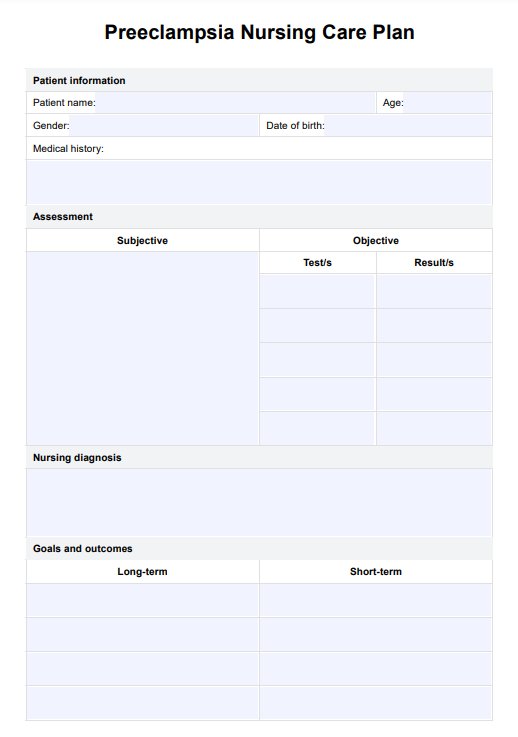Preeclampsia Nursing Care Plan Templates are used in various healthcare settings for managing pregnant women diagnosed with preeclampsia.

Preeclampsia Nursing Care Plan
Optimize maternal and fetal health with our Preeclampsia Nursing Care Plan Template for effective management and care.
Use Template
Preeclampsia Nursing Care Plan Template
Commonly asked questions
Preeclampsia Nursing Care Plan Templates guide healthcare providers in implementing and monitoring interventions to manage preeclampsia.
Nursing interventions for managing decreased cardiac output in preeclampsia include monitoring vital signs closely, administering prescribed medications to help maintain blood pressure, and positioning the patient to enhance blood flow.
EHR and practice management software
Get started for free
*No credit card required
Free
$0/usd
Unlimited clients
Telehealth
1GB of storage
Client portal text
Automated billing and online payments











